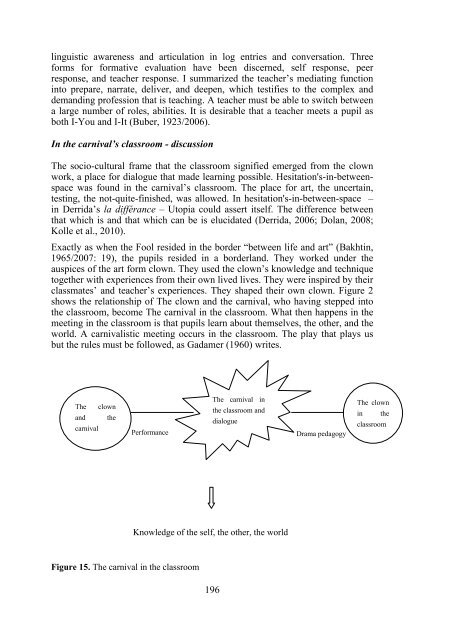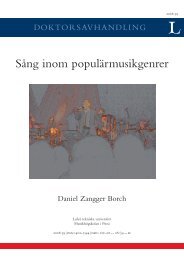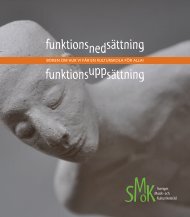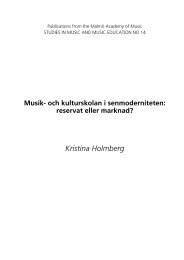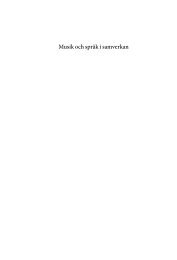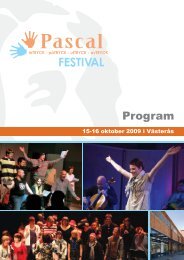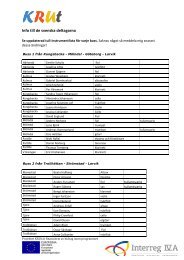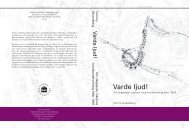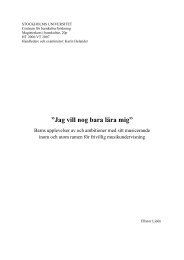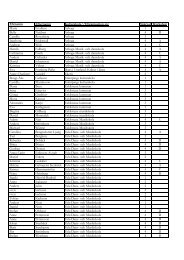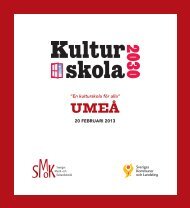KARNEVAL I KLASSRUM âKUNSKAP PÃ HJUL
KARNEVAL I KLASSRUM âKUNSKAP PÃ HJUL
KARNEVAL I KLASSRUM âKUNSKAP PÃ HJUL
Create successful ePaper yourself
Turn your PDF publications into a flip-book with our unique Google optimized e-Paper software.
linguistic awareness and articulation in log entries and conversation. Three<br />
forms for formative evaluation have been discerned, self response, peer<br />
response, and teacher response. I summarized the teacher’s mediating function<br />
into prepare, narrate, deliver, and deepen, which testifies to the complex and<br />
demanding profession that is teaching. A teacher must be able to switch between<br />
a large number of roles, abilities. It is desirable that a teacher meets a pupil as<br />
both I-You and I-It (Buber, 1923/2006).<br />
In the carnival’s classroom - discussion<br />
The socio-cultural frame that the classroom signified emerged from the clown<br />
work, a place for dialogue that made learning possible. Hesitation's-in-betweenspace<br />
was found in the carnival’s classroom. The place for art, the uncertain,<br />
testing, the not-quite-finished, was allowed. In hesitation's-in-between-space –<br />
in Derrida’s la différance – Utopia could assert itself. The difference between<br />
that which is and that which can be is elucidated (Derrida, 2006; Dolan, 2008;<br />
Kolle et al., 2010).<br />
Exactly as when the Fool resided in the border “between life and art” (Bakhtin,<br />
1965/2007: 19), the pupils resided in a borderland. They worked under the<br />
auspices of the art form clown. They used the clown’s knowledge and technique<br />
together with experiences from their own lived lives. They were inspired by their<br />
classmates’ and teacher’s experiences. They shaped their own clown. Figure 2<br />
shows the relationship of The clown and the carnival, who having stepped into<br />
the classroom, become The carnival in the classroom. What then happens in the<br />
meeting in the classroom is that pupils learn about themselves, the other, and the<br />
world. A carnivalistic meeting occurs in the classroom. The play that plays us<br />
but the rules must be followed, as Gadamer (1960) writes.<br />
The clown<br />
and the<br />
carnival<br />
Performance<br />
The carnival in<br />
the classroom and<br />
dialogue<br />
Drama pedagogy<br />
The clown<br />
in the<br />
classroom<br />
Knowledge of the self, the other, the world<br />
Figure 15. The carnival in the classroom<br />
196


